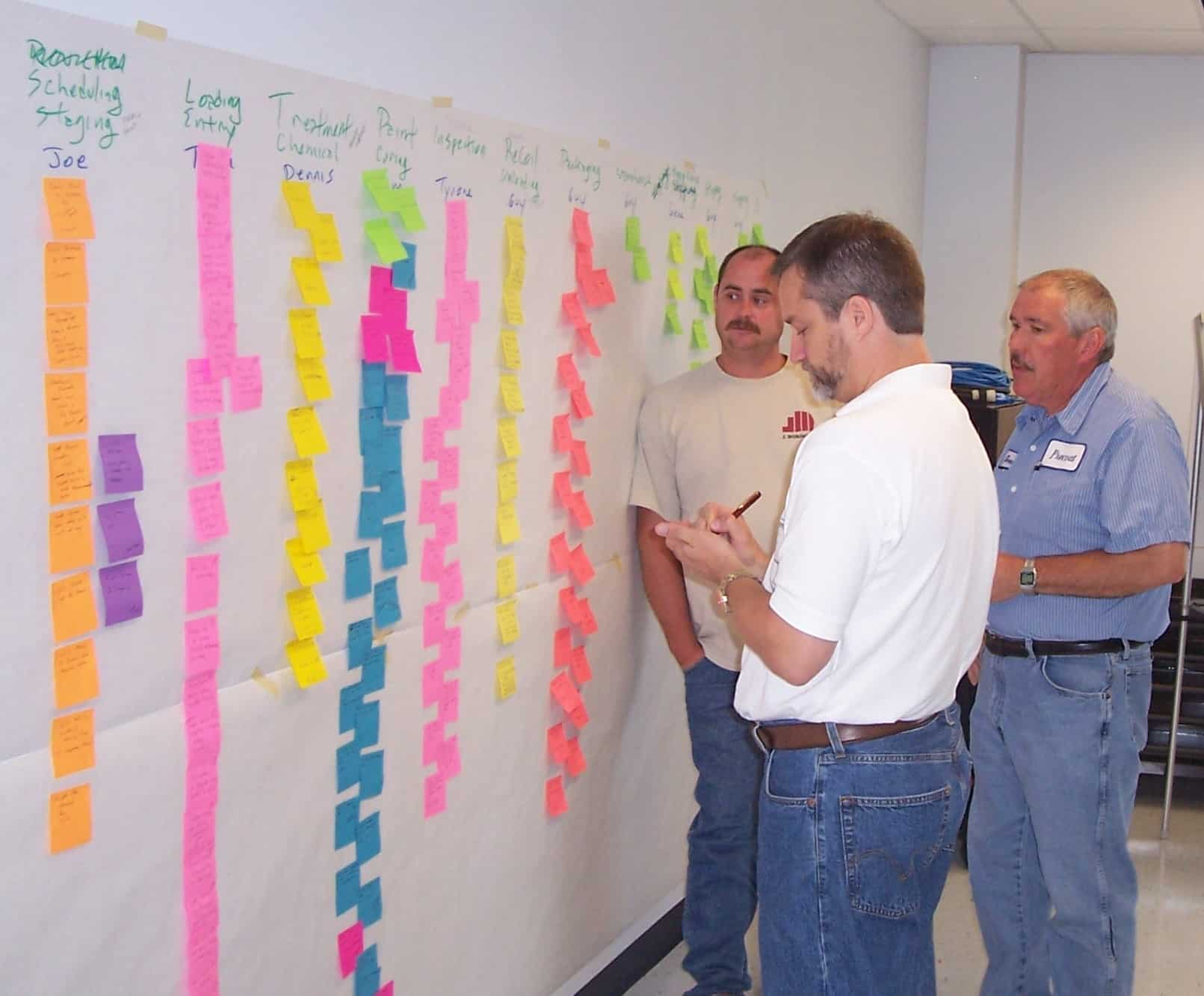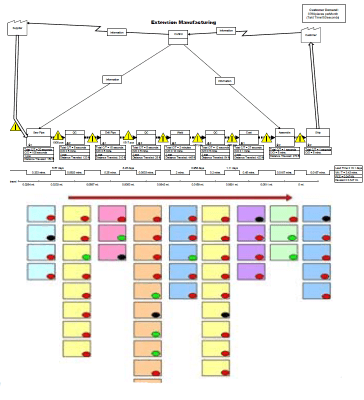What is Lean Process Improvement?

Six Sigma has applications in high technology, high transaction, or expensive error environments. But what if you are in a mature industry, a service business, or an organization that handles few transactions? Perhaps Lean Thinking (waste reduction) or the Theory of Constraints (throughput improvement) would work better. So what is lean process improvement?
Lean Thinking
First, what is Lean Thinking anyway? As the name implies, it is a mindset — a way of viewing the world. Lean is about focus, removing waste, and increasing customer value. Lean is about smooth process flows, doing only those activities that add customer value and eliminating activities that don’t.
Adding value is another way of saying “generating revenue”. If it doesn’t generate revenue then it must add cost, not value. Sounds easy, doesn’t it? After all, this is what we do every day…or is it? Let’s see…
Lean Process Flow
There are five basic steps in assessing lean operations:
- Identify the activities that create value
- Determine the sequence of activities (also called the value stream)
- Eliminate activities that do not add value
- Allow the customer to “pull” products/services
- Improve the process (start over)
For example, let’s take a look at the most fundamental cycle within a lean manufacturing operation, the order-to-delivery cycle. The top level activities, in sequence, are:
- Taking an order,
- Building the order, and
- Delivering the order.
The activities that don’t add value include order entry, backlog, inventory, and shipping delays.
In a lean operation, we could have the customer enter their own orders; products made on demand, so we would have no backlog or inventory, and then product could be shipped overnight for minimal shipping delay (or downloaded in the case of software).
Companies with very short order-to-delivery cycles (and not using inventory as a buffer) are lean operations. Lean operations have a strong cash cycle. In general, the shorter the cycle, the leaner the operation. Do you know any companies like this?
Here at Bizmanualz, we carry very little inventory. Customers enter their own orders via the web, we make product on demand, and we ship it. Our order-to-delivery cycle is very short: Orders go out the same day if they’re received before 3:00 pm, US Central time — otherwise, by the end of the next business day.
Lean 5S System
Another important tool used in lean thinking is the 5S system of organization. The idea is that a messy workplace, desk, or manufacturing cell makes it hard to find things, easier to get distracted, and can introduce accidents or mistakes. The “5S” stands for:
- Sort – Sort needed and unneeded items
- Set in Order – Arrange things in their proper place
- Shine – Clean up the workplace
- Standardize – Standardize the first three S’s
- Sustain – Make 5S a part of the job (make it ongoing)
Note the visual nature of Lean. Lean Thinking is very visual, picturesque, even Zen-like. It is definitely a state of mind. Clean, clear, and focused at the task at hand and nothing else. It does not require a lot of mathematical analysis, unlike Six Sigma.
Six Sigma vs Lean Thinking
Six Sigma is problem-focused, with a view that process variation is waste. Lean Thinking, on the other hand, is focused on process flow and views any activity that does not add value as waste. Six sigma uses statistics to understand variation. Lean uses visuals: process mapping, flowcharting, value stream mapping, and visual dashboards to understand the process flow.
|
Program
|
Six Sigma
|
Lean Thinking
|
|---|---|---|
|
View of Waste
|
Variation is waste
|
Non-value add is waste
|
|
Application
|
|
|
|
Tools
|
Math-Statistics
|
Visualization
|
|
Focus
|
Problem focused
|
Process flow focused
|
Taiichi Ohno is credited with creating the Toyota Production System (TPS), which is one of the better known implementations of Lean Thinking anywhere in the world. The concepts of lean were born out of the severe resource constraints in postwar Japan, which leads us to the Theory of Constraints.
Lean Thinking is ideal for mature (energy), slow growth (automotive), low transaction industries (small business) or an organization where mathematical tools are not common. Lean begins to use systems thinking and considers all of the process interactions.
But lean is still a reductionist approach focused on eliminating waste (cutting costs). What is needed is to balance the resources released through Lean or Six Sigma improvement programs with an increase in throughput and need for resources. Otherwise you enter a cost cutting, job losing cycle and your lean process improvement program will grind to a halt.
Lean Process Improvement
If you’re in a mature, slow growth, low transaction, or non-math business, Lean Thinking will work really well for your organization. So what’s left? The desired end result is lean process improvement. The Theory of Constraints (throughput improvement) takes the concepts of Lean Thinking to another level of systems thinking.
















The knowledge of lean thinking and six sigma is very valuable. The Japanese are where they are economically using these process improvement tools. Thank you Anderson for sharing.
I think learn thinking is similar to critical thinking
And also similar to the 80/20 rule
Excellent insight! It reminds me of the Japanese incremental learning concept that, as I recall, uses three short words that mean: 1) To learn a process step-by-step, 2) To refine the process, and – if recall correctly on the last point – 3) to share the process with others. Any ideas of what that concept is called?
That is similar to the Kaizen process.